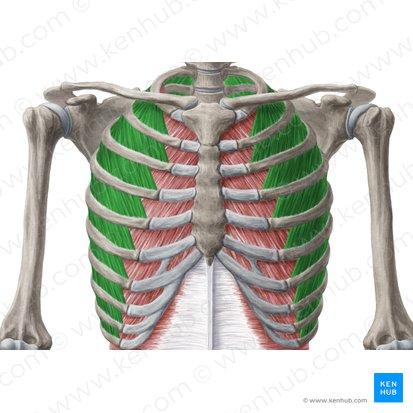
External Intercostals
O: Inferior border of rib above
I: Superior border of rib
below
N: Intercostal nerves
A: Contraction creates
inhalation by elevating ribs; relaxation depresses the ribs resulting
in exhalation

Internal Intercostals
O: Superior border of rib below
I: Inferior border of rib
below
N: Intercostal nerves
A: Contraction draws adjacent
ribs together during forced exhalation

External Oblique
O: Inferior 8 ribs
I: Iliac crest and linea alba
N:
Intercostal nerves
A: Compress abdomen and flex vertebral column,
laterally flex and rotate vertebral column to the opposite side
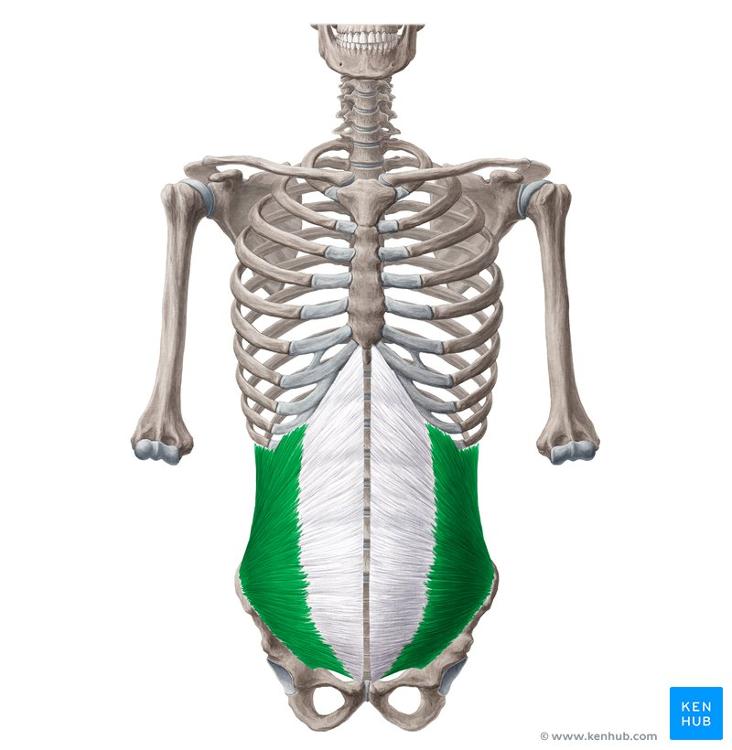
Internal Oblique
O: Iliac crest, inguinal ligament, and thoracolumbar fascia
I:
Cartilage of last four ribs and linea alba
N: Intercostal
nerves
A: Compress abdomen and flex vertebral column, laterally
flex and rotate vertebral column to the same side
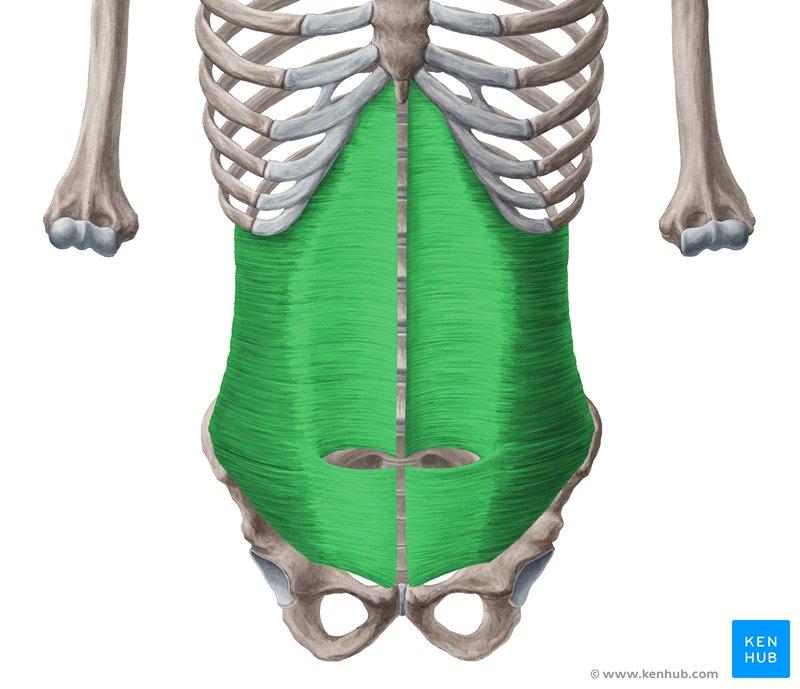
Transverse Abdominus
O: Iliac crest, inguinal ligament, lumbar fascia, and cartilages of
inferior six ribs
I: Xiphoid process, linea alba, and
pubis
N: Intercostal nerves
A Compress abdomen
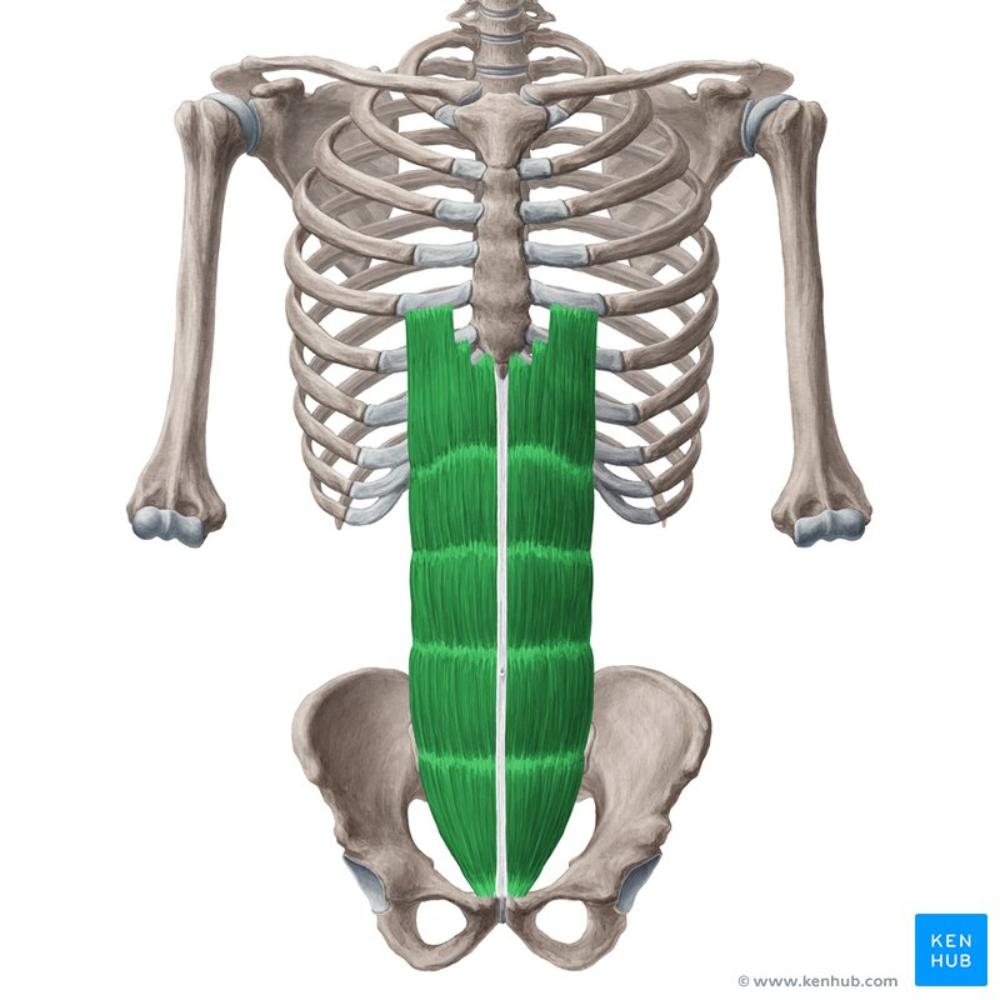
Rectus Abdominus
O: Pubic crest and pubic symphysis
I: Cartilage of 5th-7th ribs
and xiphoid process
N: Intercostal nerves
A: Flexes trunk
and compresses abdomen
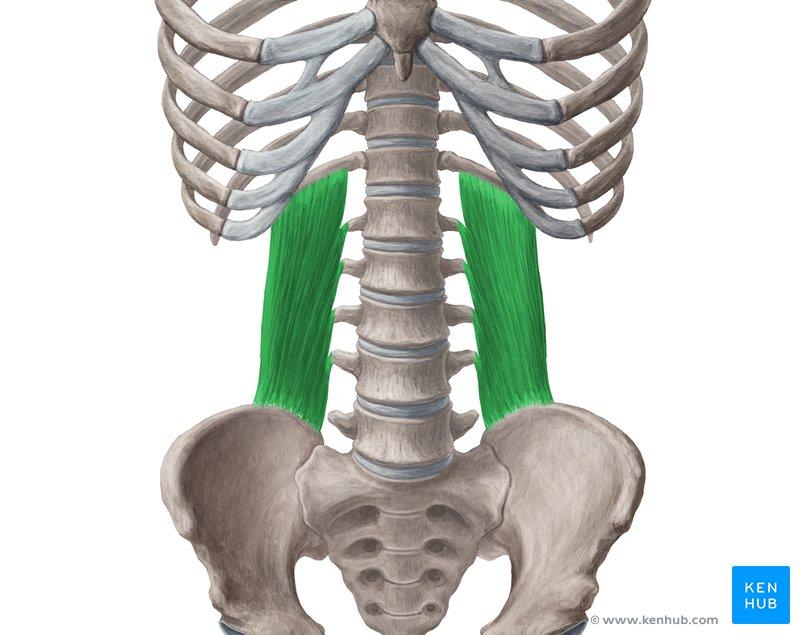
Quadratus Lumborum
O: Iliolumbar ligament and iliac crest
I: Inferior border of
12th rib and transverse processes of L1-L4
N: T12 thoracic nerve
and nerves of L1-L3
A: Pull the ribs inferior during forces
exhalation, extend cerebral column, laterally flex vertebral column
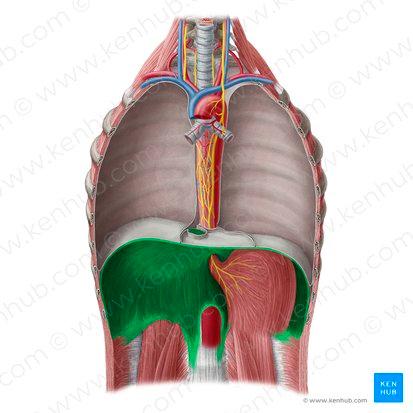
Diaphragm
O: Xiphoid process, cartilage of the lower 6 ribs, and lumbar
vertebrae
I: Central tendon
N: Phrenic nerve
A:
Contraction causes it to flatten and increase vertical dimension of
thoracic cavity (inhalation); Relaxation causes it to move superiorly
and decrease the vertical dimension of thoracic cavity (exhalation)
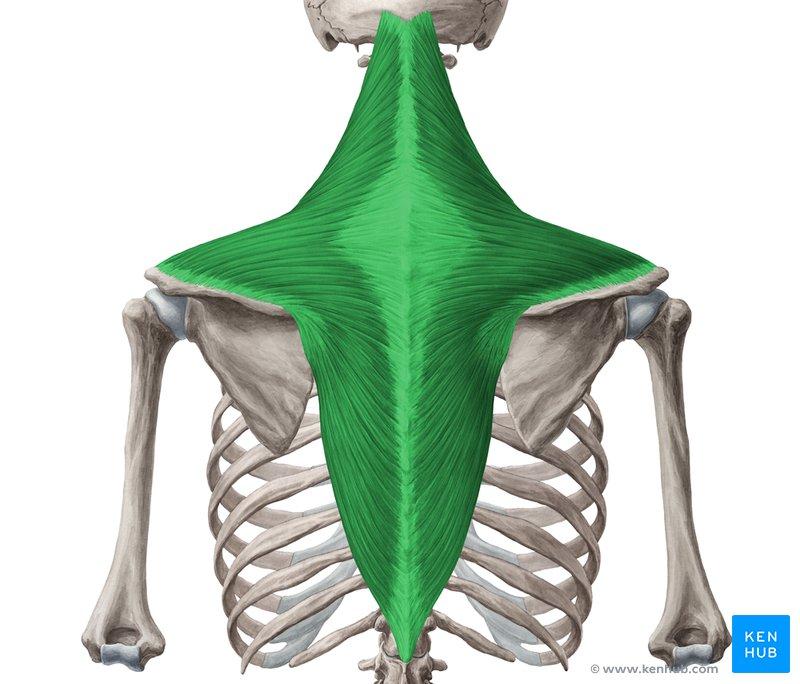
Trapezius
O: Superior nuchal line of occipital bone, ligamentum nuchae,
andspines of C7 and T1-T12
I: Clavicle, acromion, and spine of
scapula
N: Spinal accessory nerve
A: Upper
trap: Elevate scapula, upwardly rotate the scapula and extend head.
Middle trap: Retract scapula.
Lower trap: Depress scapula and upwardly rotate the scapula
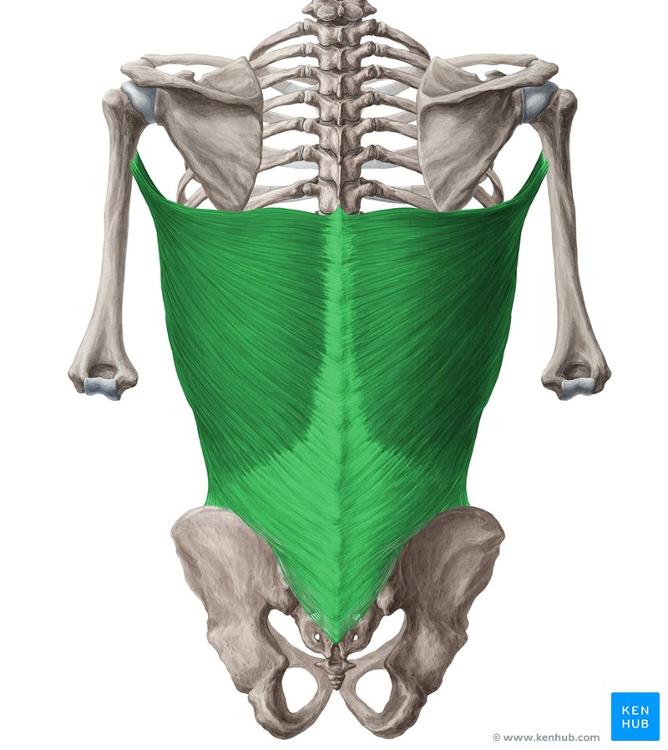
Latissimus Dorsi
O: Spines of T7-T12 and L1-L5, sacrum and ilium, inferior 4
ribs
I: Bicipital groove
N: Thoracodorsal nerve
A:
Extends, adducts, and internally rotates the arm at the shoulder
joint; draws arm inferiorly and posteriorly
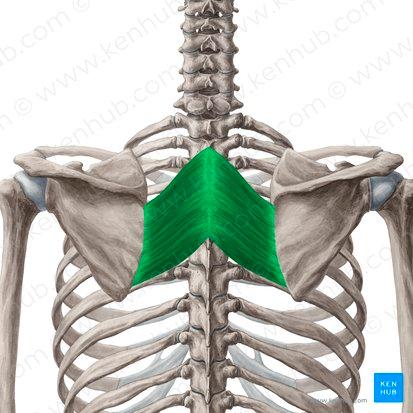
Rhomboid Major
O: Spines of T2-T5
I: Medial border of scapula inferior to
spine
N: Dorsal scapular nerve
A: Elevation, retraction, and
downward rotation of the scapula
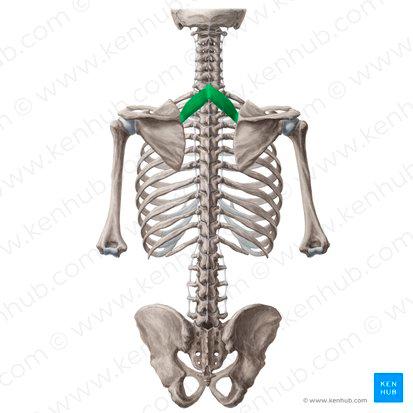
Rhomboid Minor
O: Spines of C7-T1
I: Medial border of scapular superior to
spine
I: Dorsal scapular nerve
A: Elevation, retraction, and
downward rotation of the scapula
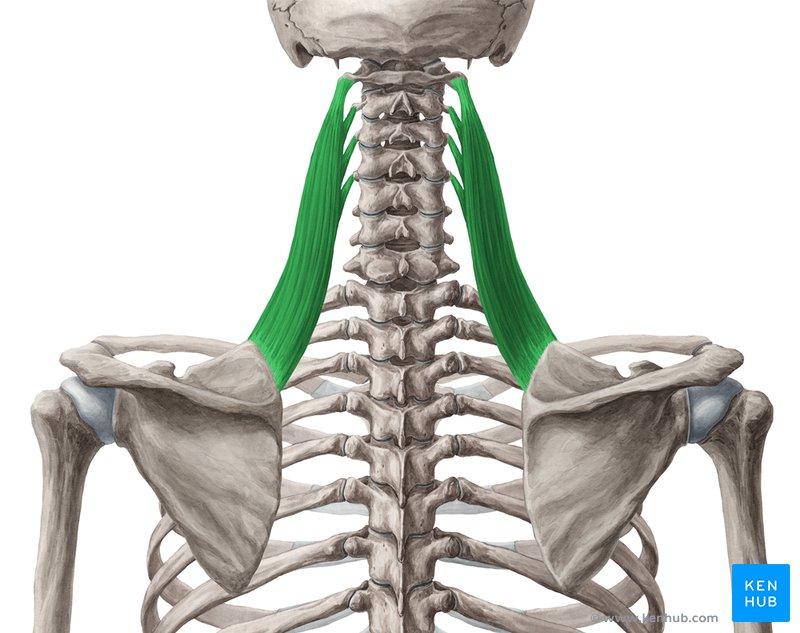
Levator Scapulae
O: Transverse processes of C1-C4
I: Superior medial border of
scapula
N: Dorsal scapular nerve
A: Elevation and downward
rotation of the inferior angle of scapula
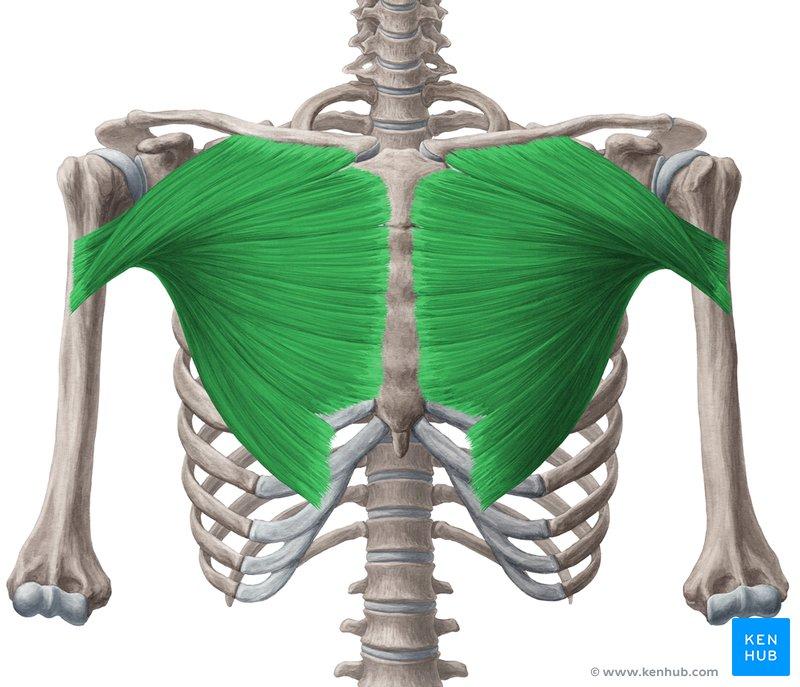
Pectoralis Major
O: Clavicle, sternum, and costal cartilages of ribs 2-6
I:
Greater tuberosity and bicipital groove
N: Medial and lateral
pectoral nerves
A: Shoulder adduction and internal rotation and
assists with flexion
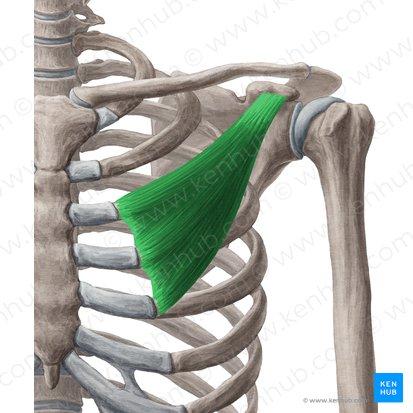
Pectoralis Minor
O: Ribs 2-5
I: Coracoid process
N: Medial pectoral
nerve
A: Scapular protraction and downward rotation
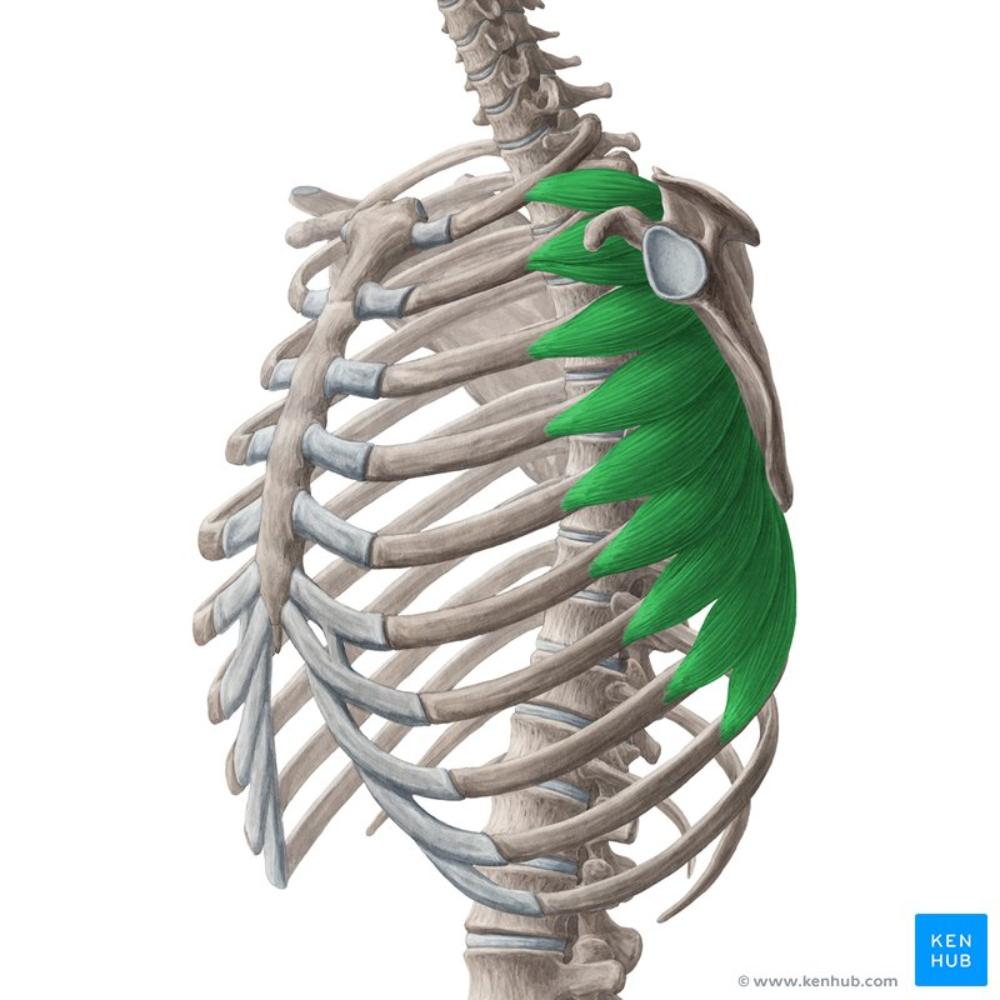
Serratus Anterior
O: Superior 9 ribs
I: Medial border of scapula
N: Long
thoracic nerve
A: Protraction and upward rotation of the scapula